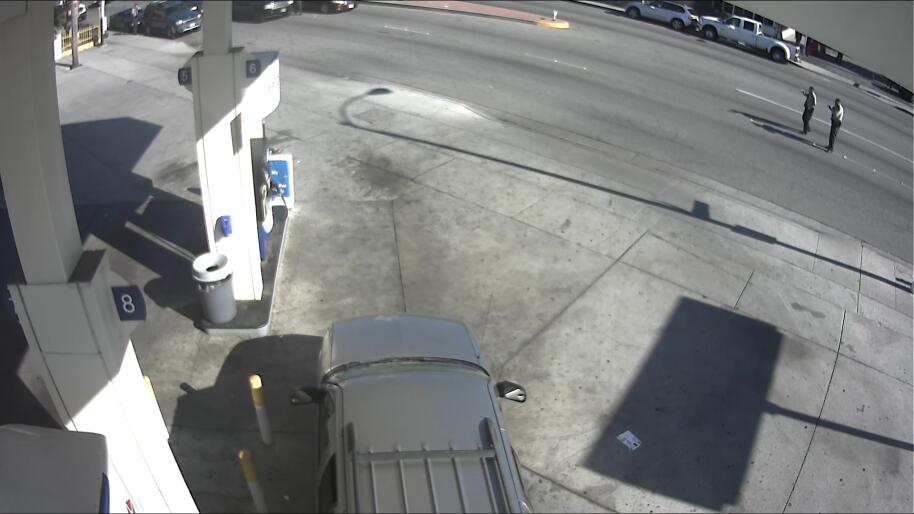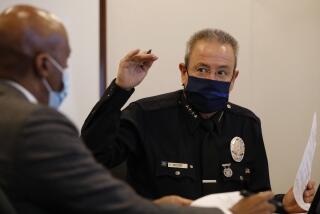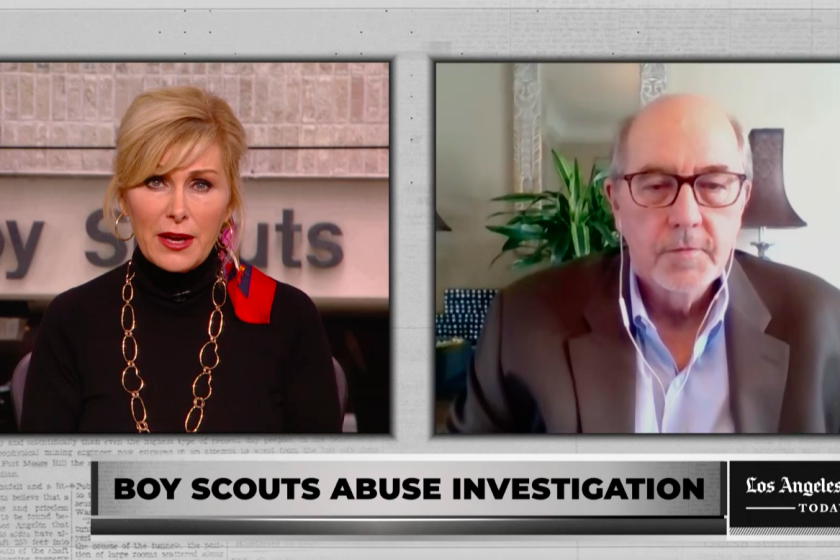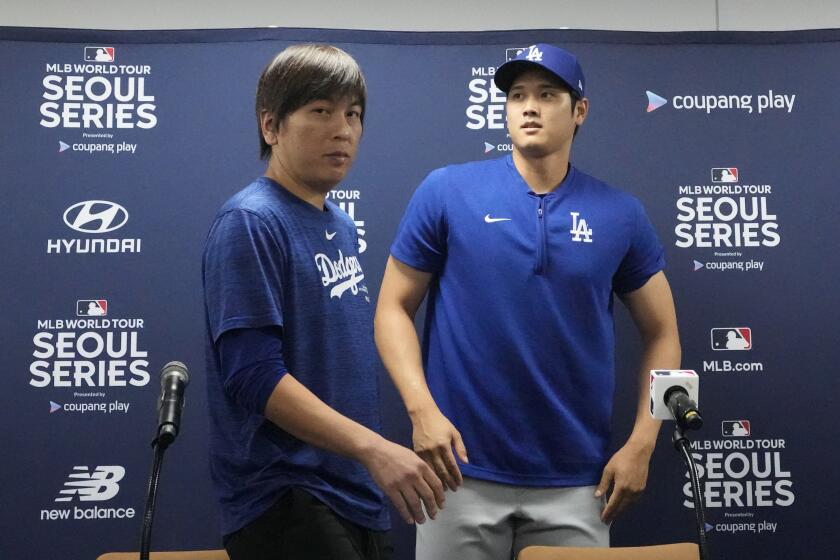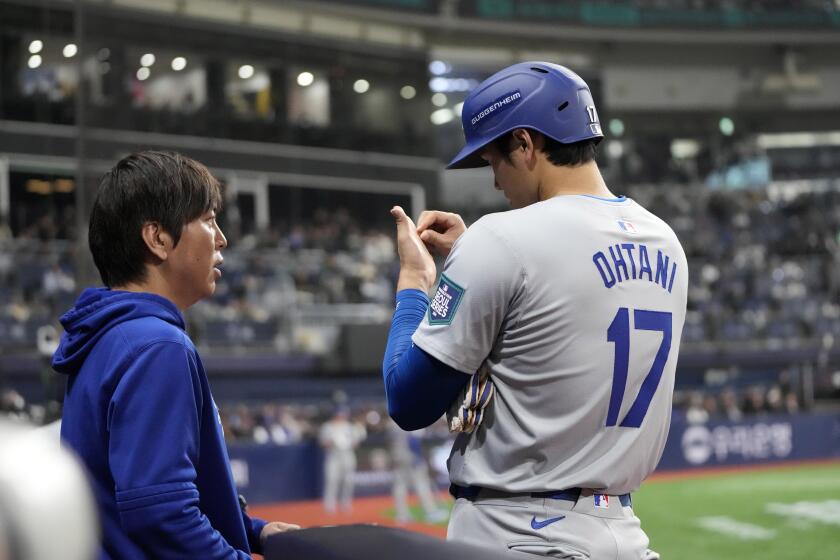Police PR machine under scrutiny for inaccurate reporting, alleged pro-cop bias
The cellphone video drew outrage from the moment it surfaced. The footage showed deputies shooting a man as he walked away from them and continuing to fire at him, 33 rounds in all, as he crawled on the concrete.
As protests grew over the shooting, the communications staff within the Los Angeles County Sheriff’s Department advocated for breaking protocol by releasing a new video and image; these showed the man, Nicholas Robertson, holding a gun when he was shot on Dec. 12, 2015.
The move appeared to work: Protests died down once the new material came out. A leading activist backed away from calling the killing an “execution,” and the media gave ample coverage of the department’s narrative that Robertson was a persistent threat, having shot into the air before deputies arrived.
But it wasn’t the full account. Two years later, a more close-up video emerged that contradicted the deputies’ claims: Robertson did not point the gun at deputies just before the shooting, and the gun was not loaded. The revelations led a jury to award $3.6 million to Robertson’s family, citing negligence by the deputies.
The evolving narrative of the Robertson shooting is a vivid illustration of the key role that law enforcement public relations units have come to play in shaping the public’s understanding of confrontations with police. The units are an influential yet little-examined arm of law enforcement, with staffers sometimes applying the principles of crisis communications when their officers’ actions spark controversy.
As cellphone videos increasingly draw people to the streets to protest law enforcement, police public information officers are under more scrutiny, with some critics saying their reports protect the image of officers and taint people targeted by police. In the wake of protests over the killing of George Floyd, there are growing questions over whether these units are serving the public with unbiased facts or are getting in the way of the truth.
“We’re spending good money to be lied to,” said Reuben Jones, a criminal justice reform advocate and executive director of Frontline Dads, a group supporting formerly incarcerated people in Philadelphia. “Do the police need their own communications teams simply to craft a narrative that best serves their interests?”
Inaccurate police accounts are sometimes due to the information fog of a fast-moving event. But critics say police press operations nearly always put forth a story line that makes officers’ actions appear justified. And when police spokespeople publicize the prior criminal history of people killed by law enforcement or call them “gang members,” it amounts to an insidious form of police abuse, they say.
Recent polling shows there is growing support for more extensive, independent oversight of police behavior. Some say this should extend to police press shops, which should focus less on advancing a narrative and more on relaying facts without spin. That includes the timely release of footage from body cameras, details about officers who discharge their weapons and other information requested by community members — even if it doesn’t necessarily make the department look good.
Law enforcement agencies argue that their public affairs teams are essential to getting out vital information quickly and defend the tactics and size of the units. The Los Angeles County Sheriff’s Department had 42 people in its information bureau as of last month, at an annual cost of about $4.8 million. The strategic communications director at the time of Robertson’s killing earned $200,000 a year; the bureau’s captain last year made $218,000. The Los Angeles Police Department spends about $3.29 million a year for 25 people in similar units, as of last month.
One incident criticized as a public relations move was the LAPD’s decision to swiftly release a video purporting to show the moments before Carnell Snell Jr. was shot and killed by an officer on Oct. 1, 2016.
Snell was riding in the back seat of a car that was pulled over by police who suspected it was stolen. Snell ran out of the car and was chased by officers, who fired six rounds, hitting the 18-year-old three times.
Faced with an outcry by people saying Snell didn’t have a weapon, Charlie Beck, the LAPD chief at the time, released surveillance footage that appeared to show part of the police chase, with Snell holding a handgun.
But the video did not show the shooting, leaving community members to question why the footage was released. A handgun was found at the scene, but the recording didn’t confirm the officers’ claims that Snell turned toward them holding a weapon at the time he was shot.
An autopsy would later reveal that Snell was shot in the back, right thigh and left forearm. Prosecutors and the police commission found the shooting was justified, though the commission faulted some of the officers’ tactics, including splitting up while chasing Snell.
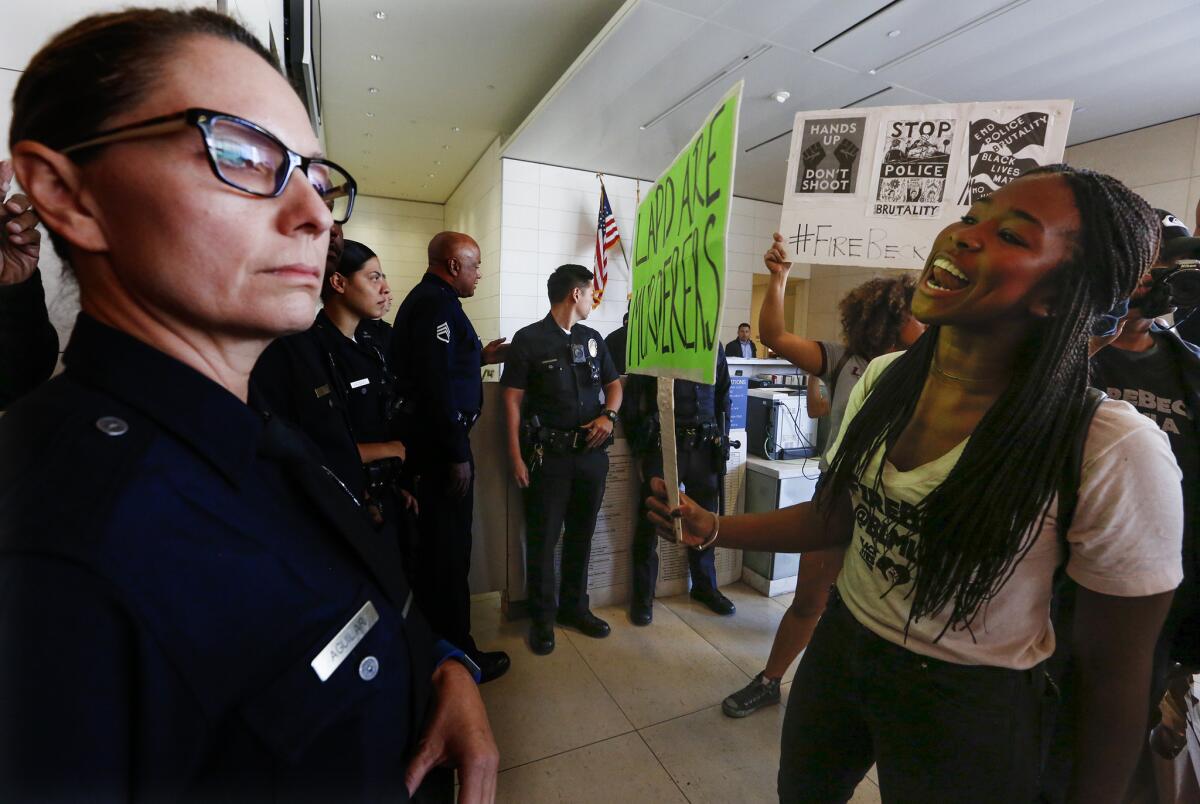
Lack of video of the actual shooting left open the possibility in the minds of some community members that it was unjustified. They saw the police’s release of the footage of Snell with a handgun as a way to make the public assume Snell was at fault in some way.
“They engage in this practice that we call ‘double murder.’ They first kill the body, and then they assassinate the character,” Melina Abdullah, a professor of pan-African studies at Cal State L.A. and co-founder of Black Lives Matter Los Angeles, said of the police. “And they use these videos for character assassination, which in the minds of the public gives an excuse for their death. So they really blame the victims for their own deaths.”
Abdullah questioned why the police department was willing to immediately publicize the video of Snell but not release video from all other critical incidents. She said that while the agency now releases footage more quickly, the videos are edited and packaged in a way that supports the viewpoint of law enforcement.
Josh Rubenstein, LAPD’s public information director, said the agency released the video of Snell in response to inaccurate reports that he had not been carrying a gun. He said the department has a responsibility to provide context in the face of false or “purposely malicious” information that’s intended to inflame a “negative sentiment toward the department.” He said the agency’s inspector general reviews videos of critical incidents to make sure they’re portrayed in a balanced way.
***
Public information officers have taken on an expanded role within police departments in recent years, with the ability to publish news on their own platforms, including social media, instead of relying on traditional media.
Many members of the information teams wear the same uniforms as their fellow officers, having moved from street policing to desk work, sometimes as a way to get promoted or paid more. Others are civilians, including former journalists.
Their proponents believe robust public affairs operations are needed to build ties with the community. In an era when cellphone videos can instantly spark a whirlwind of attention, and sometimes misinformation, departments feel they must act quickly to provide answers and educate the public about why officers do what they do. Without these units, some argue, departments wouldn’t have dedicated staff to answer questions, and reporters could face even more barriers in trying to get information.
Indeed, some police departments have hired “transparency advisors” to enhance their communication with the public. One such firm, Cole Pro Media, advises law enforcement organizations on how to be more forthcoming and avoid spin. Laura Cole, a former journalist who founded the firm, says she counsels agencies, some of which pay up to $4,000 a month, to avoid describing people killed by officers as “suspects” or “gang members.” She also advises them to have higher standards in verifying information that is made public.
“When departments don’t give out information, it brings about secrecy. That’s what we want to avoid. If a department did something wrong, or somebody messed up, they must own it. And they need to be the ones to tell the community,” said Cole.
Carol Lin, who was strategic communications director for the L.A. County Sheriff’s Department at the time of the Robertson shooting, pushed for the unusual release of video the day after the incident. She said the decision was influenced partly by concern over the growing protests at the scene but was not meant to stifle dissent; rather, she said, it was meant to provide missing context.
Lin, now a senior advisor to the Los Angeles County Chief Executive Office, said the release of new evidence helped the public understand that deputies were responding to a call about a man shooting into the air who was potentially dangerous to passersby.
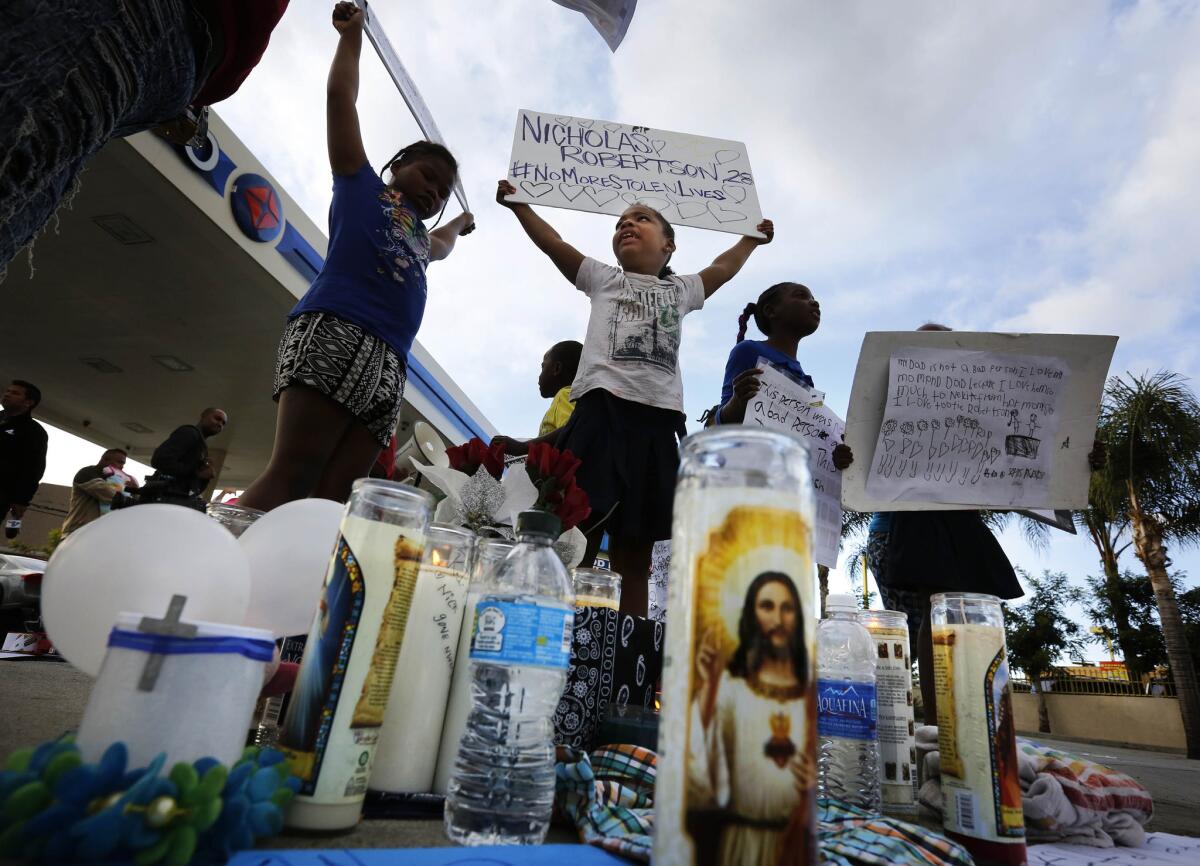
“To the public it looked horrible that deputies were just taking down a helpless individual with complete disregard for life,” she said. “[But the deputies] did it because they saw the risk. There were people nearby gassing up their cars. It was risk they couldn’t take, that this individual could discharge his weapon.”
Asked if the department would have released video that reflected poorly on the deputies’ actions, Lin said, “That is a good question. I was never in a situation where that was even an option.”
These days at the Sheriff’s Department, which is under new leadership since the Robertson shooting, decisions to release video during an ongoing investigation would come only from detectives or the sheriff and wouldn’t involve the information bureau, according to Lt. John Satterfield. The bureau is open around the clock to notify the public about emergencies like natural disasters, road closures and missing children. Its staff also coordinate numerous other functions, such as deputy award ceremonies, video production and liaising between department members and international police. Satterfield defended the bureau’s work, saying it strives to provide the most accurate available information to the public.
“In order to be effective, peace officers and the law enforcement profession need to be seen as a legitimate authority who is worthy of the community’s trust and respect,” Satterfield said in a statement. “It is naive not to acknowledge there are those who actively distort information in an effort to negatively alter the perception of law enforcement.”
Satterfield said the agency — which has recently been criticized for failing to release records — prides itself on its transparency and accuracy.
Yet family members of people slain by deputies more than a year ago have still not been given access to video footage they requested of the shootings, according to a recent motion passed by the Los Angeles County Board of Supervisors. The motion called for the sheriff’s information bureau to be repurposed to comply with laws that require the release of video of uses of force within 60 days.
In many cases, problematic actions by the police are compounded by false information from their press operations.
After a South Carolina police officer fatally shot Walter Scott in 2015, the officer’s agency claimed in a news release that Scott was trying to shoot the lawman with a Taser. A cellphone video later showed that Scott was unarmed and running away when he was killed. In 2014, Chicago police said in a statement that 17-year-old Laquan McDonald was moving toward officers with a knife when they fatally shot him. But dash-cam video showed that the youth, armed with a blade, was moving away from lawmen and was shot repeatedly when he was already on the ground.
****
In the hours after Floyd’s killing on Memorial Day, few within the Minneapolis Police Department seemed to know the truth about what had happened. The body-camera footage hadn’t been reviewed. The officers involved didn’t give a statement accessible to the public information officer. Neither he nor the supervisors supplying him with information had been to the scene.
But the department’s press office acted anyway, with a statement its director now says was inaccurate.
“Man dies after medical incident during police interaction” was the headline on a statement that John Elder, the department’s director of public information, issued hours after Floyd was killed. The announcement said officers detained a man, later identified as Floyd, and “noted that he appeared to be suffering medical distress” before he was transported to a hospital.
No mention that an officer used his knee to pin Floyd’s neck against the ground for nearly nine minutes. And no mention that Floyd was on his stomach, handcuffed and not resisting as he pleaded for breath.
Elder said he got his information from sergeants who work in the area where Floyd was killed and from computer-aided dispatch, which serves as a log of communications between officers and dispatchers. The log, it turned out, didn’t include any details about the use of force. Elder did not review the body-camera footage, which he said would have required a wait of several hours. Only later, when cellphone video emerged, did Elder realize that his press release was inaccurate.
“This had literally zero intent to deceive or be dishonest or disingenuous. Had we known that this [situation] was what we saw on the video, that statement would have been completely different,” Elder said.

He said he can’t change the statement or issue an update because the case was handed over to the Minnesota Bureau of Criminal Apprehension, a different agency.
Elder, who said he earns about $110,000 per year, said his department employs two additional people in the press office, one of whom is a videographer who makes content about officers doing good works, among other assignments.
The Minneapolis City Council voted last month to eliminate the police press office, effective in October, citing concerns over accuracy and bias. The city will take over communications about the police.
***
The media play a significant role in amplifying statements by police and allowing law enforcement sources to be the primary — and sometimes the only — voices in a story. And even as news organizations are trying to revamp their coverage of police, cuts in the industry mean there are fewer journalists to respond to scenes and develop diverse sources, at a time when there is more pressure to provide instant news.
Many police officers feel misrepresented in the media. But unlike victims of police shootings, law enforcers have public funding at their disposal to generate favorable narratives about themselves.
Sometimes that means bolstering the public affairs staff with outside communication firms, at considerable cost.
In Fullerton, it started with the uproar over the fatal beating of Kelly Thomas by police in 2011.
The police chief worried that protests would swell if the officers involved were acquitted of charges in the killing of Thomas, a homeless man who did not resist and begged for his life as officers beat him.
So the city hired Cornerstone Communications, an Irvine-based company that created a site for the police department to tell its side of the story.
The Fullerton Police News, as the website was called, featured pieces on the department’s use of de-escalation tactics and medal of valor ceremonies. The PR firm also pushed the agency to be more open by facilitating an interview in which the police chief publicly admitted that his team “blew it” in handling the Thomas case. The mistakes included releasing inaccurate information that an officer’s bones were broken in the struggle with Thomas, the chief said.
That experiment led to Cornerstone establishing a broader platform, the website Behind the Badge, which has featured stories about the police departments of La Habra, Santa Ana, Tustin, Westminster and Pasadena. Each city pays an annual fee for the promotional service, ranging from $24,000 for Santa Ana to $72,000 for Pasadena, which recently ended its involvement.
Recent stories included a tribute to a deputy chief in Tustin who was retiring after 31 years and a feature on Westminster police holding a “drive-by” birthday celebration involving a motorcade with sirens and flashing lights.
Bill Rams, a former reporter at the Orange County Register who co-founded Cornerstone Communications, said that with local newspapers disappearing, the website publishes stories that wouldn’t otherwise be told. He said the cost is small compared to what departments would have to pay for in-house PR professionals.
But Priscilla Ocen, a Loyola Law School professor and member of the Sheriff Civilian Oversight Commission in Los Angeles County, said it’s troubling that law enforcement would spend money to shape how the public views them.
“The idea that police spend money to manipulate the narrative about the work they’re doing is not the best use of public funds,” she said. “I think they should be straightforward with the public.”
More to Read
Start your day right
Sign up for Essential California for news, features and recommendations from the L.A. Times and beyond in your inbox six days a week.
You may occasionally receive promotional content from the Los Angeles Times.
